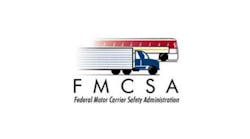DOT Proposes Electronic Logbooks to Ease Hours of Service Compliance
Interstate commercial truck and bus companies will use Electronic Logging Devices (ELDs) in their vehicles to improve compliance with the Hours of Service rules if the U.S. Department of Transportation has its way. DOT’s Federal Motor Carrier Safety Administration (FMCSA) has proposed a rulemaking they say would significantly reduce the paperwork burden associated with hours-of-service recordkeeping for interstate truck and bus drivers and improve the quality of logbook data.
"Today's proposal will improve safety while helping businesses by cutting unnecessary paperwork—exactly the type of government streamlining President Obama called for in his State of the Union address," said Transportation Secretary Anthony Foxx. "By leveraging innovative technology with Electronic Logging Devices, we have the opportunity to save lives and boost efficiency for both motor carriers and safety inspectors."
The proposed rule is intended to reduce hours-of-service violations by making it more difficult for drivers to misrepresent their time on logbooks and avoid detection by FMCSA and law enforcement personnel. Ideally, it would also help reduce crashes by fatigued drivers. Backers of the proposal cite research showing it could prevent approximately 20 fatalities and 434 injuries each year for an annual safety benefit of $394.8 million.
The Supplemental Notice of Proposed Rulemaking, which was sent to the Federal Register to publish on March 12, supersedes a prior 2011 Notice of Proposed Rulemaking related to electronic on-board recorders. It includes provisions to:
- Respect driver privacy by ensuring that ELD records continue to reside with the motor carriers and drivers. Electronic logs will continue to only be made available to FMCSA personnel or law enforcement during roadside inspections, compliance reviews and post-crash investigations.
- Protect drivers from harassment through an explicit prohibition on harassment by a motor carrier owner towards a driver using information from an ELD. It will also establish a procedure for filing a harassment complaint and creates a maximum civil penalty of up to $11,000 for a motor carrier that engages in harassment of a driver that leads to an hours-of-service violation or the driver operating a vehicle when they are so fatigued or ill it compromises safety. The proposal will also ensure that drivers continue to have access to their own records and require ELDs to include a mute function to protect against disruptions during sleeper berth periods.
- Increase efficiency for law enforcement personnel and inspectors who review driver logbooks by making it more difficult for a driver to cheat when submitting their records of duty status and ensuring the electronic logs can be displayed and reviewed electronically, or printed, with potential violations flagged.
In developing the updated proposal, FMCSA relied on input from its Motor Carrier Safety Advisory Committee, feedback from two public listening sessions and comments filed during an extended period following the 2011 proposed rule. The proposal also incorporates the mandates included in the most recent transportation bill, the Moving Ahead for Progress in the 21st Century (MAP-21) Act, and other statutes.
American Trucking Associations officials said they welcomed the proposal.
“ATA supports FMCSA’s efforts to mandate these devices in commercial vehicles as a way to improve safety and compliance in the trucking industry and to level the playing field with thousands for fleets that have already voluntarily moved to this technology,” said ATA President and CEO Bill Graves.
“It is past time to replace pencil and paper with 21st Century technology,” said ATA Chairman Phil Byrd, president of Bulldog Hiway Express, Charleston, S.C.
“After carefully considering stakeholder input on this proposal, we urge the agency to move quickly to craft a final rule that ensures deployment of tamper-proof equipment, while still ensuring the regulatory flexibility needed to accommodate the diversity of the trucking industry and the ELD vendor community,” added ATA Executive Vice President Dave Osiecki. “We especially appreciate FMCSA proposing that paper printouts of ELD data be an acceptable means of demonstrating hours of service compliance, but not requiring all ELDs to be printer-equipped.”
ATA did voice concerns about details relating to supporting document retention requirements and grandfathering of existing devices, among others, and will address those with FMCSA going forward.





